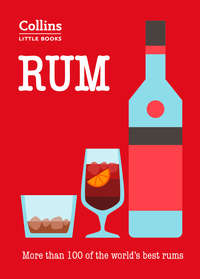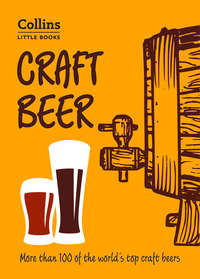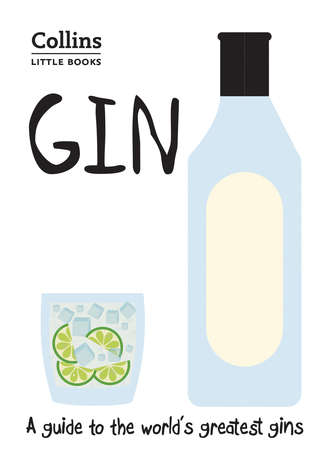
Полная версия
Gin: A guide to the world’s greatest gins

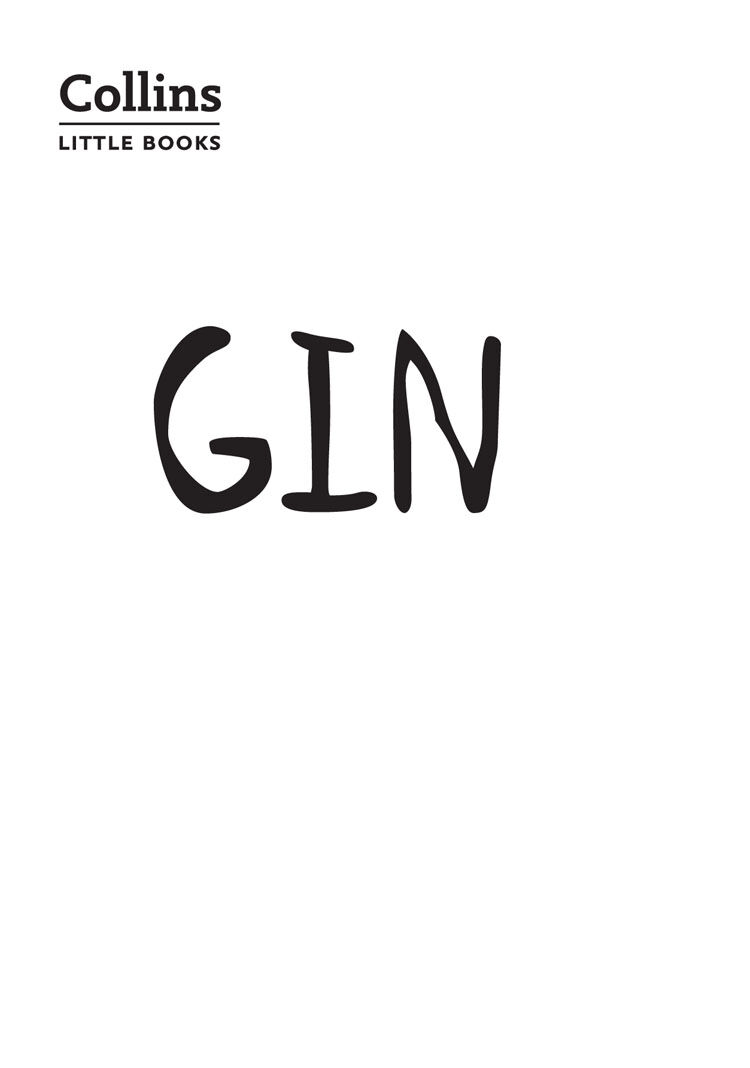
Copyright
HarperCollins Publishers
Westerhill Road
Bishopbriggs
Glasgow
G64 2QT
First Edition 2017
© HarperCollins Publishers 2017
eBook Edition © July 2017 ISBN 9780008265168
Version: 2017-07-03
Collins® is a registered trademark of HarperCollins Publishers Limited
www.collins.co.uk
A catalogue record for this book is available from the British Library
Author: Dominic Roskrow
All rights reserved under International and Pan-American Copyright Conventions. By payment of the required fees, you have been granted the non-exclusive, non-transferable right to access and read the text of this e-book on screen. No part of this text may be reproduced, transmitted, downloaded, decompiled, reverse engineered, or stored in or introduced into any information storage and retrieval system, in any form or by any means, whether electronic or mechanical, now known or hereafter invented, without the express written permission of HarperCollins.
HarperCollins does not warrant that www.collins.co.uk or any other website mentioned in this title will be provided uninterrupted, that any website will be error-free, that defects will be corrected, or that the website or the server that makes it available are free of viruses or bugs. For full terms and conditions please refer to the site terms provided on the website.
Contents
Cover
Title Page
Copyright
Introduction
What is gin and how is it made?
What this book covers
Gin-related spirits: genever
Gin-related spirits: Old Tom
Gin-related spirits: Aged gins
Gin-related spirits: Flavoured gins
A – Z of gins
6 O’clock
60 Squared
Adnams Copper House
Anno Kent Dry Gin
Aviation American Gin
Barr Hill Gin
Beefeater 24
Berkeley Square
Black Shuck
Blackwater No.5 Gin
Blackwoods Vintage Dry Gin
Bloom
Boë
Bombay Dry Gin
Bombay Sapphire
Broker’s Gin
Cadenhead’s Classic
Cambridge Dry Gin
Caorunn
Citadelle
City of London Gin
Cold River
Conncullin Gin
Cotswolds Dry Gin
Dà Mhìle Seaweed Gin
Daffy’s Gin
Darnley’s View Spiced Gin
Death’s Door
Dingle Gin
Dodd’s Kew Organic Gin
Dorothy Parker
Drumshanbo Gunpowder Gin
Dutch Courage Dry Gin
East India Company London Dry Gin
East London Liquor Premium Gin Batch No 1
Eden Mill Love Gin
Edinburgh Gin
Fifty Pounds Gin
Filliers Dry Gin Tangerine
Finsbury Platinum
Flemish OriGIN
Fords
G’Vine Floraison
Gilpin’s
Gin Mare
Ginerosity
Glendalough Wild Botanical Gin
Gordon’s Export
Greenall’s Original
Hayman’s Royal Dock
Hendrick’s
Hernö
Hibernation
HMS Victory Navy Strength
Hoxton
Inverroche Classic
Japanese Gin
Jensen’s Bermondsey Gin
Junipero Gin
Ki No Bi Gin
Kirsty’s Gin
Langton’s No 1
Listoke 1777
Liverpool Gin
London Hill
Makar Glasgow Gin
Martin Miller’s Westbourne Strength
Mascaró Gin 9
Mombasa Club
Monkey 47 Schwarzwald Dry Gin
No 3 Gin
Nolet’s
Old Raj
Opihr Oriental Spiced
Oxley
Pickering’s
Plymouth Gin
Pollination gin
Portobello Road No 171
Sacred
Sipsmith
St George Terroir Gin
Strathearn Heather Rose Gin
SW4
Tanqueray No TEN
Tappers Darkside Gin
Tarquin’s
Telser Liechtenstein Dry Gin
The Botanist
The London No 1
Two Birds Gin
Van Wees Three Corner Dry Gin
Vidda Tørr Gin
Warner Edwards Harrington Dry Gin
Whitley Neill
Whittaker’s Navy Strength Gin
Wight Mermaids Gin
Wild Island Botanic Gin
Williams Elegant Crisp Gin
Worship Street Whistling Shop Cream Gin
Index
Picture Credits
About the Author
About the Publisher
Introduction
In one form or other gin has been with us for more than 600 years. It has been subject to wild swings of fortune, to gigantic ebbs and flows in popularity, and been courted and rejected by prince and pauper alike. In its many guises it has served as a medicine to the affluent, a tonic to the troops, and an elixir to the wretched rabble that populated the violent streets of London. Today it is enjoying a worldwide revival and has achieved a status as the very epitome of quality craft distilling.
Gin’s roots lie in Europe, quite possibly in Italy but most definitely in the Netherlands, where it was distilled for medicine, and juniper was first used to hide the taste of the naked spirit. It was given to British troops fighting in the Thirty Years War – Dutch courage – and it may be that returning troops brought it back, increasing its popularity, though a limited amount of distillation had already started in England by this time.
The better made ‘Dutch’ version of the spirit was enjoyed by the aristocracy, and a poorer, cheaper spirit became popular with the poor. When Dutch King William of Orange ascended the throne, he encouraged distillation and there may have been some patriotic consumption too. By 1730 there were more than 7000 shops in London selling nothing but spirits.
But gin had started to become a problem. Attempts to restrict widespread drunkenness and violence by making gin prohibitively expensive backfired spectacularly, prompting rioting and a surge in illicit distilling. Few official licences were taken out, but production in London reached a staggering 11,000,000 gallons.
By this time further licensing reforms meant that beer shops had sprung up across the country. To compete, gin distillers opened large gin palaces – imposing and relatively stylish places. But gin was about to undergo another sea change. The invention of the column still meant that the quality of gin in general rose, and a specific style of gin came into existence: London Dry Gin.
Gin became popular with the middle classes, and when the Empire spread out to India, its transformation was completed when it was discovered that quinine was a deterrent to malaria-carrying mosquitoes – and the perfect way to hide its bitter taste was to mix it with carbonated water and add it to gin, creating the gin and tonic.
By the twentieth century, though, it seemed gin’s best days were behind it. The spirit faced a two-pronged identity crisis. On the one hand, its debauched and negative reputation proved remarkably enduring – ‘gin-soaked’ and ‘mother’s ruin’ are not extinct even now. And on the other, the gin and tonic gained a reputation associated with the worse type of Englishman – and it did tend to be men – those associated with the closed-shop world of the golf club and sports bar, and the pre-drinks ritual when dining out.
Gin’s fortunes were revived in the 1970s, when cocktails became popular and drinks makers discovered recipes where gin was a key ingredient. Perhaps, then, we shouldn’t have been surprised by the surge in popularity in gin when a new generation of bartenders – now calling themselves mixologists – turned to provenance and history to create creative and exciting new cocktails. Nonetheless, today’s gin boom is unprecedented. A perfect wave of a thriving cocktail culture, a desire to drink less but better, a trend towards heritage and authenticity, and a worldwide passion for micro and craft distilling has meant the emergence of hundreds of new gins.
No book could hope to cover them all, nor reflect the surge of renewed interest in flavoured gins, aged gins, innovative new drinks based loosely on gin, and close relatives such as genevers, and this book doesn’t even attempt to do so. To put it into some context, one major online retailer lists nearly 450 gins. That’s just the tip of the iceberg. The number of new producers is growing by the week. It seems that every town, city, and even village is producing its own gin, and not just in England, either. Indeed, most British gin is produced in Scotland.
The loose definitions of what constitutes gin means that long-standing controversies as to the importance of juniper to a gin’s taste and the way it is distilled continue unabated. Some of the experimentation and innovation in the category mean that, effectively, new drinks categories are being invented.
But, whatever else, the craft revolution means that gin has shaken off its snooty middle-class English image, and is enjoying a surge of popularity among drinkers seeking quality and well-made drinks.
This book is meant to be an introduction to the gin category. We have selected one hundred gins, covering the best-known names and a selection of the best of the new wave of gin makers. We have concentrated mainly on traditional gins.
So what exactly is gin?
What is gin and how is it made?
Unlike the production of Scottish single malt whisky, which is covered by a stringent set of rules, there is considerable debate as to what may be acceptably called gin.
The basic definition of gin is a spirit made from ethyl alcohol and flavoured with botanicals. Juniper berries must be included and should be the ‘predominant’ flavour. The alcoholic strength of the spirit must be no less than 37.5% ABV. There are further definitions as to what can be called distilled gin and London gin.
But the definitions are loose and leave considerable loopholes and room for interpretation. There have been attempts to tighten up the rules, but some distillers have played footloose and fancy-free with the requirement to have a ‘predominant’ juniper flavour.
Making gin
In simplistic terms, gin is made from a base spirit that has been distilled to a high strength and then reduced to 60% ABV. Some distilleries make this base spirit themselves, but many buy it in from a select number of large distilleries.
The spirit, made from a variety of grains, is sometimes referred to as neutral grain spirit, though that is not quite the case, and the spirit used will influence the final gin. To this base spirit a range of botanicals will be added. These are natural ingredients and include the compulsory juniper berries, as well as, most often used, coriander, angelica, lemon, and orange peel.
The number of botanicals varies from gin to gin, but a good-quality premium gin may have six to ten botanicals, and these may include everything from spices to tea and from flowers to exotic fruits.
Steeping
Some distillers soak the botanicals before distillation, and they have their own ideas how long this process should take.
Immersion
The botanicals are then immersed in the base spirit, normally in a pot still. The pot still is then heated to release the oils from the botanicals. At this point the process is similar to that for single malt whisky production, with the early vapours discarded, the middle part of the run collected, and the final part discarded. Further neutral alcohol and water may be added.
Vapour extraction
Some distilleries do not immerse the botanicals, but suspend them above the base spirit. This is the method used by Bombay Sapphire. As the vapours rise, the flavours of the suspended botanicals are extracted and collected as before.
Individual extraction and blending
Some distillers take each botanical separately and put it through the distillation process. Then the collection of different botanical distillates are blended to produce the required gin.
What this book covers
It is hard to believe that in the early part of the millennium gin was restricted to Gordon’s, Beefeater, and a smattering of premium expressions. Now a good bar will offer the customer an array of regionally produced premium gins in a range of styles and flavours, quite possibly alongside a choice of mixers. No longer is the lemon slice the lone accompaniment to the classic gin and tonic.
Tonics matter, as does the ice used. And discerning drinkers now understand what makes a good martini or negroni, as well as a gin and tonic.
And that is the tip of the iceberg. The new generation of mixologists are working at the coal face by exploring old drinks styles and historical recipes, looking to experiment with botanicals, and rediscovering and re-inventing classic old drinks such as The Old Tom.
Apart from a passing reference to these drinks styles, this book is firmly focused on what might be described as the more traditional gin brands. Our selection includes a mixture of the major producers, alongside some of the more exciting of the new producers and one or two which show just how vibrant and exciting the gin sector has become.
Gin-related spirits: genever
Genever is often referred to as ‘Dutch gin’ but this is not quite right. Under European law it may be made in the Netherlands, in Belgium, and in a couple of German and French states. Though it is related to gin and is seen to be the forerunner of the premium gin spirit now being made in Britain, it also nods towards the production of whiskey, and particularly bourbon.
Genever is made from a mash bill made up of rye, corn, and malted barley. The grains are cooked at different temperatures, milled and mashed by adding hot water. This is then fermented into a rough beer or barley wine. The yeast used is normally baker’s yeast, but brewer’s or distiller’s yeast may also be used.
The resulting liquid is then distilled up to three times. Finally the resulting distillate is distilled again with a range of botanicals which must include juniper berries. The resulting genever is fruity and infused with botanicals.
Oude or jonge
Genever may, and often is, matured in barrels at this point. And it may be described as either ‘oude’ or ‘jonge’. Somewhat confusingly, this does not refer to the length of time the spirit spends in wood. A jonge genever contains a maximum of 15 per cent malt, and often a lot less. Oude genevers must have a minimum of 15 per cent malt wine content, and typically have 40 per cent, giving them more character.
Genevers are most often matured for a short period in used casks, but some are aged for considerably longer, and the likes of Zuidam in the Netherlands is using a range of cask types.
Gin-related spirits: Old Tom
Nobody is absolutely sure where the name Old Tom comes from, but you’d be forgiven if you thought it had something to do with the expression ‘any old Tom, Dick, or Harry’, because it would seem it can be many things to many people.
Just as its naming is lost in the depths of time, so it would seem is an exact definition of it, but, in simplistic terms, it is a maltier, fruitier, and sweeter version of what we might now associate with traditional gin.
It occupies a space between the big, rich, malty genevers that the Dutch produced, and the sharper, tangy, and drier style of gin that we know as London Dry Gin. Walk into a gin palace or pub in the 18th or 19th century and order a gin, and Old Tom is likely to be what you would get. But by the 20th century its popularity had declined and London-style gin had replaced it.
The picture is further clouded by the fact that distillation techniques were evolving rapidly, there were no uniform or standardized methods of production, and, beyond the need for juniper berries to be among the botanicals, ingredients for it weren’t set in stone. Some Old Tom was exported in tired old barrels that didn’t influence the flavour of the spirit, while others travelled in active barrels and matured en route, giving them very different flavours.
The Old Tom style is being rediscovered, and leading drinks experts such as Dave Wondrich have worked with distillers to produce a modern version of the drink. Many consider the style to be the perfect stepping stone for a whisky lover to discover the joys of gin.
Gin-related spirits: Aged gins
The whisky writer Jim Murray tells a story about being with a Dutch distiller describing his latest gin, which he had aged in oak barrels for some years. As the conversation went on and they talked more about the grain used and the type of barrel, Jim suddenly declared, ‘That’s not gin, that’s whisky!’
It’s a fine line, but certainly once you remove the botanicals from the equation, the lines become severely blurred. Aged gin has become fashionable in recent years, with bars hosting their own mini-casks full of gin spirit, and creating their own take on aged gin.
There are also countries, particularly those in Eastern Europe, where stainless steel casks are prohibitively expensive and distillers have had no choice but to use oak casks.
Given the flexibility that gin offers, the idea of ageing opens up a whole new world of possible flavours, as distillers explore everything from virgin oak from continents across the world to casks that have been previously used for a vast range of different wines and spirits, including some that are highly regional and region-specific.
Gin-related spirits: Flavoured gins
This is where modern gin gets most exciting, or where the category is being devalued or destroyed, depending on your point of view. Purists say that flavoured gins are not gins at all, but are flavoured vodkas, particularly where juniper is relegated to the passenger seat. Others argue that there is no difference between these gins and liqueurs.
But it’s not that simple. Firstly, the flavours aren’t added in the most direct sense, but are infused with the gin spirit during distillation, or as part of a maturation process in the cask. And while the natural reaction is to assume that some of the concoctions sound sickly, cloying, and oversweet, that doesn’t need to be the case at all. A new wave of gin distillers argue that they are inventing new styles and exciting new drinks, whether they are strictly gin or not.
Sources for flavoured gins that have been used in the past include Shiraz grapes, clotted cream, quince, and Yorkshire tea. But a special mention needs to go to Sikkim, a Spanish gin using red tea from Sikkim, Tibet, mixed with, among other things, wild strawberries, cranberries, bilberries, bitter orange, and coriander. It is described as pleasant, tasty, and refreshing.
6 O’clock
PRODUCER: Bramley & Gage
ABV: 43%
REGION AND COUNTRY OF ORIGIN: Gloucestershire, England
WEBSITE: www.bramleyandgage.com/6-oclock
BOTANICALS: Includes juniper berries, orange peel, elderflower
Bramley & Gage is a company originally founded by husband-and-wife team Edward Bramley Kane and Penelope Gage, who were fruit farmers in Devon. They started making fruit liqueurs in the 1980s and became rather good at it, expanding the drinks side of the business. The company is now run by a new generation of Kanes. This expression of gin was launched in 2010, and is named after the time when the great-grandfather of current directors Michael and Felicity would sit down for a gin and tonic. This stylishly packaged gin is distilled on a two-hundred-litre still known as Kathleen, and it is one of a range of products that include a sloe gin and a damson gin. The company has expanded over the last thirty years, and is now based in Gloucestershire. 6 O’clock has won countless awards, and can be tasted as part of the distillery’s tour and tasting package.

60 Squared
PRODUCER: Anno Distillers
ABV: 60%
REGION AND COUNTRY OF ORIGIN: Kent, England
WEBSITE: www.annodistillers.co.uk
BOTANICALS: Juniper, orris root, coriander, angelica, cassia bark, liquorice, cubebs, Kentish hops, Kentish lavender, Kentish rosehips, camomile, Kentish samphire, lemon, bitter orange, kaffir lime leaves
This is another gin from Anno Distillers, which makes Kent Dry Gin, and uses local botanicals including Kentish hops and lavender in its recipes.
This gin was originally released as a limited edition of 1,000 bottles to celebrate founders Andy Reason and Norman Lewis’s sixtieth birthdays. However, the distillery says that because of the overwhelmingly positive response it received from consumers, the distillery has decided to continue with it. As it was a celebratory release, the distillers say they made sure that the flavour would burst in the mouth. This was done by combining a selection of local hops, woody botanicals, and enticing spices with a full 60% ABV. The bold flavours work particularly well in a negroni. Just months after its release, Anno 60 Squared claimed the title of ‘Specialist Drinks Category Winner’ at the Taste of Kent Awards in March 2016.
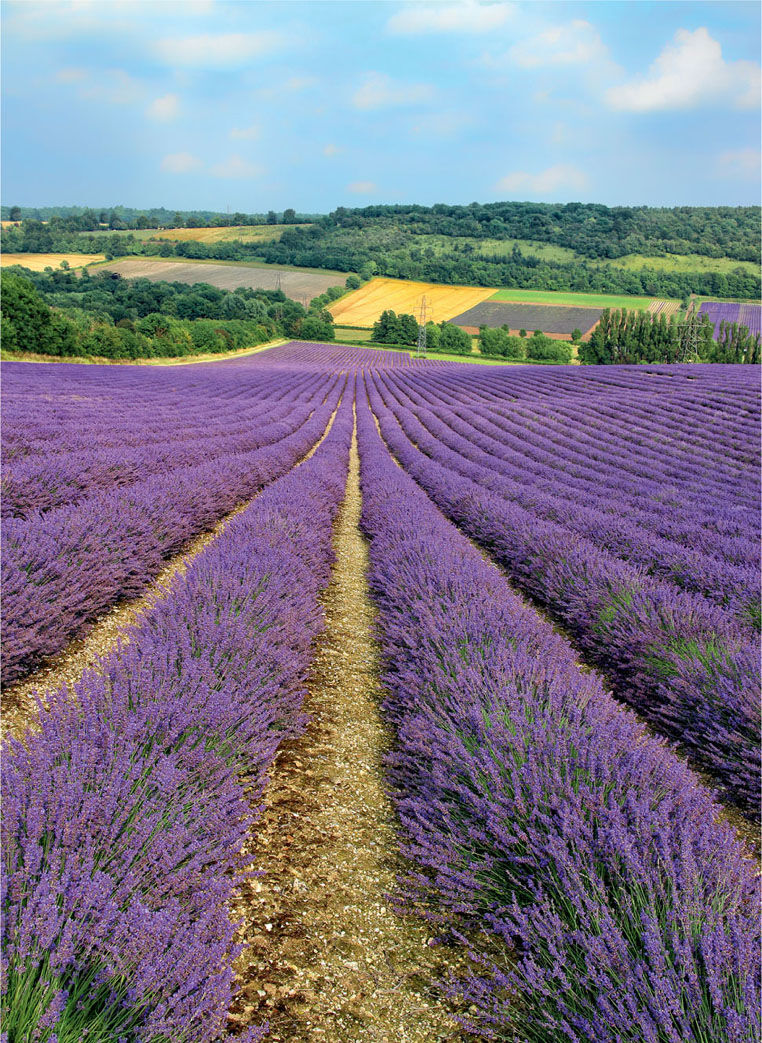
Adnams Copper House
PRODUCER: Adnams
ABV: 40%
REGION AND COUNTRY OF ORIGIN: Southwold, England
WEBSITE: www.adnams.co.uk/spirits/our-spirits/distilled-gin
BOTANICALS: Juniper berries, orris root, coriander seed, cardamom pod, sweet orange peel, hibiscus flowers
Adnams is a highly respected award-winning brewer, but it had always been a desire of chairman Jonathan Adnam to make distilled products including whisky. Copper House was built on the brewery’s Southwold site after the company successfully overturned arcane rules that forbade brewing and distillation under the same roof. Distiller John McCarthy and his team now make a range of distilled products, but this was the starting point, and it has won awards regularly. The distillery points to the use of hibiscus flowers as the least expected ingredient. The team say they fell in love with the hibiscus petals’ bitter floral taste when they tasted it in hibiscus tea. The distillery also makes an enjoyable eau de vie based on its Broadside bitter.




